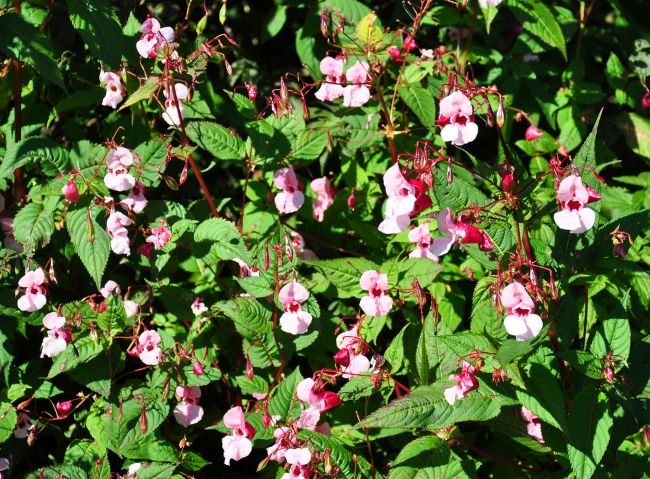Controlling Himalayan Balsam in the UK: Cultural and Chemical Approaches

Himalayan balsam (Impatiens glandulifera) is a strikingly beautiful but highly invasive plant species that has become a significant environmental challenge across the UK. Originally introduced in the 19th century for its ornamental qualities, it has since spread rapidly, outcompeting native vegetation and altering ecosystems along riverbanks, wetlands, and woodland edges. Effective control of Himalayan balsam requires a multi-faceted approach, incorporating both cultural and chemical methods to mitigate its spread and help restore affected habitats.
Understanding the Problem
Himalayan balsam thrives in moist soils, particularly along waterways. Its prolific seed production, with explosive seedpods capable of dispersing seeds up to seven meters, contributes to its rapid expansion. The dense stands formed by this plant not only crowd out native species but also leave riverbanks vulnerable to erosion when the balsam dies back in winter, exposing bare soil. A comprehensive management strategy is crucial for long-term control, reducing its impact on biodiversity and preventing further spread.
Cultural Control Methods
Cultural control methods for Himalayan balsam focus on physical removal and community engagement. These techniques are environmentally friendly, reduce the need for chemical intervention, and promote a sense of stewardship among local communities.
- Manual Pulling and Cutting: One of the most effective cultural methods is manual removal. Himalayan balsam is relatively easy to pull up due to its shallow root system. This method is particularly effective if carried out before the plant sets seed, typically between June and July. Cutting can also be effective if performed repeatedly throughout the growing season to prevent flowering and seed production.
- Community Involvement: Engaging local communities in “balsam bashing” events has proven successful in many areas. Volunteers come together to pull up Himalayan balsam, often organized by local councils or environmental groups. These events not only help control the plant but also raise awareness about invasive species and their impact on native ecosystems.
- Grazing: In some cases, controlled grazing by livestock, such as cattle or sheep, can be used to keep Himalayan balsam in check. Grazing animals help suppress the growth of young plants, although care must be taken to prevent overgrazing, which could damage native vegetation.
Chemical Control Methods
Chemical control can be an effective complement to cultural methods, particularly in areas where manual removal is impractical or where large infestations are present. However, chemical methods must be used with caution to minimize unintended impacts on non-target species and surrounding habitats.
- Herbicide Application: Glyphosate is the most commonly used herbicide for controlling Himalayan balsam. It can be applied as a foliar spray, typically in late spring or early summer when the plant is actively growing but has not yet produced flowers. Careful application is essential to avoid affecting nearby native plants or contaminating watercourses. In sensitive areas, herbicide use may require permission from regulatory bodies, such as the Environment Agency.
- Selective Treatment: To reduce the impact on non-target species, herbicides can be applied selectively using a weed wiper or by spot treatment. This approach minimizes chemical use and helps protect native vegetation, making it a more environmentally responsible option for areas with diverse plant life.
Integrated Management and Long-Term Considerations
The most effective control of Himalayan balsam often involves combining cultural and chemical methods. For example, manual removal can be used in accessible areas, while herbicides are applied to less accessible or heavily infested sites. Consistent monitoring and follow-up treatments are crucial, as Himalayan balsam seeds can remain viable in the soil for up to two years, meaning reinfestation is a significant risk if management efforts are not sustained.
In addition to direct control measures, habitat restoration is an important part of long-term management. Replanting native species along riverbanks and disturbed areas helps to stabilize the soil, reduce the risk of reinvasion, and promote biodiversity recovery.
Final words
Controlling Himalayan balsam in the UK is a challenging but achievable goal when cultural and chemical methods are used in tandem. Community engagement plays a vital role in managing this invasive species, fostering awareness and collective action. While herbicides can provide effective control in certain situations, the emphasis should be on sustainable, integrated management approaches that prioritize ecological health and resilience. By combining manual removal, chemical treatment, and habitat restoration, it is possible to reduce the spread of Himalayan balsam and protect the UK’s native ecosystems for future generations.